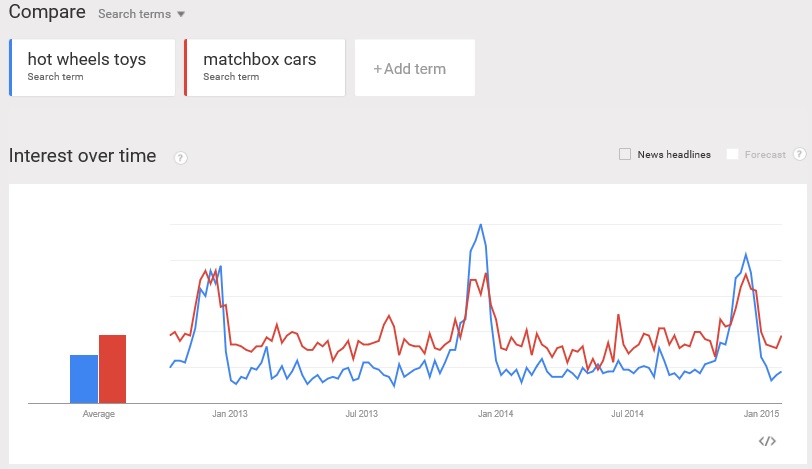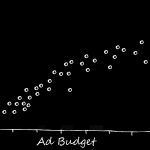Marketers today have more control over their advertising investment than ever before. By control, I mean marketers have many options for how to spend their ad dollars, very little commitment in terms of minimum spend levels, and rich data to pour through to measure results. Marketers can reallocate their ad budget weekly, daily, even hourly for certain channels. Despite this flexibility, however, many marketers still use antiquated methods to optimize their ad budgets. Here are six tips to help you systematically boost your marketing performance.
Multi-Channel Attribution
Digital attribution models are a good way to manage digital-only campaigns, but not holistic enough to allocate your entire media mix or effectively measure your true paid media ROI.
Attribution is a hot topic today and there are tons of attribution technology vendors offering their services. The customer journey typically involves multiple touchpoints with the brand before conversion. Last click attribution only measures the channel lastly responsible for delivering the lead and most marketers agree that using last-click attribution alone is a weak way to measure marketing ROI. Digital attribution models are a good way to manage digital-only campaigns, but not holistic enough to allocate your entire media mix or effectively measure your true paid media ROI.
Five Limitations of Attribution Models
Understanding how much each marketing tactic is contribution to sales is crucial for optimizing your advertising budget. However there are limitations to any off-the-shelf attribution model that every marketer should know.
Generally speaking, I’ll define attribution models as any systematic method of allocating sales back to a marketing campaign or channel. There are a variety of methods from simple rule-based allocations to advanced predictive models. Let’s define media mix models as a regression-based method of measuring the sales level produced from a combination of marketing tactics.
OK, just to recap. Attribution models allocate sales to marketing spend. Media Mix models allocate marketing spend to sales.
Some common attribution methods include: Allocate sales based on first click and last click interactions, allocate sales across all digital touchpoints in the customer journey, use unique tracking codes (promo codes, unique phone numbers), or simply ask prospects (or customers) how they heard about you.
Understanding how much each marketing tactic is contribution to sales is crucial for optimizing your advertising budget. However there are limitations to any off-the-shelf attribution model that every marketer should know.
1. Non-Linear Productivity Curves
If your ad mix is even remotely optimized today, the next dollar you spend produces fewer sales than the previous dollar.
Attribution models allocate a fraction of sales back to each marketing channel rather than measure how many dollars it takes in each channel to generate one sale. One limitation of this approach is that the allocation should vary as your ad budget or media mix changes due to non-linear productivity curves. If your ad mix is even remotely optimized today, the next dollar you spend produces fewer sales than the previous dollar.
The shape of each marketing channel’s non-linear productivity curve varies. There are a variety of reasons this happens. Partly because productivity per click or per thousand impressions drops off faster in certain channels than other due to market saturation. You could have substantially higher frequency in digital channels than offline channels and realize sharp diminishing returns. Or it could be due to costs rising due to supply and demand of fixed inventory.
Regardless of the reason, the marginal productivity of the next dollar spent in each of your marketing channels will be different and as a result, the true sales attributed to each channel will vary too. Be wary of any solution that allocates a fixed percentage of sales to any given channel.
2. Measuring Brand Equity
Any click-based online attribution method will attempt to assign all sales to your current paid marketing channels. In reality, a sizeable percentage of your current sales are coming from customer referrals, word-of-mouth, and past marketing efforts. Media mix analysis can identify a company’s baseline sales, which is the sales level achieved with no advertising spend in the current period. This accumulated brand equity is also referred to as earned media.
For brands that have been in the market for several years, it’s not uncommon for 80% or more of their sales to be attributed to earned and owned efforts, with only 20% attributed to current paid efforts. If you stopped all marketing today, sales wouldn’t dip to 0 immediately. However most attribution methods assume all sales are driven from current marketing efforts, producing a false attributed ROI.
3. Influence From Offline Marketing
Offline marketing like TV, billboards, radio, direct mail, print ads, in-store displays, etc. drive awareness to the brand and online shopping. However most multi-touch attribution models only address digital media from email, search, display and social. Online traffic generated from offline marketing efforts will typically show up as organic and branded search traffic based on last click. Offline marketing can be factored into a media mix model, but not typically into attribution models that require cookies or clicks to measure results.
4. Seasonality and Promotions
Seasonality in product demand can be responsible for large swings in product sales. For example, my two sons are really into hot wheels cars. I’m sure we have over 100 cars somewhere in the house. Every year, online search interest for keywords like ‘hot wheels toys’ and ‘matchbox cars’ surges during November and December (see Google Trends exhibit below). There’s a natural cycle to selling children’s toys. Regardless of the industry, marketers will realize a lift in sales during seasonal peaks. It’s a false read to associate that lift in sales to the in-market campaigns that are occurring during the seasonal spike.

5. Competitor Activity and Other External Factors
Competitor ad spend levels impact an advertisers share of voice and have a substantial impact on brand awareness and consideration. Once upon a time while working for an insurance company I developed a model to predict brand awareness and consideration using share of voice, awareness and consideration data on several insurance companies compiled from Kantar Media and our own ad tracking surveys. This was used to predict changes in awareness and consideration from changes in share of voice (ad spend levels). The ultimate purpose was to quantify the impact of brand advertising over time for a multi-period media mix model and pro forma optimization. Competitor spend data has a predictive, measurable impact on an advertisers sales. Additionally, new competitors can enter the market, your distributors can go bankrupt, the economy can move into a recession, and several other external factors outside the advertiser’s control can impact sales. An attribution model will not likely account for any of these factors.
So What Should I Do?
Combine an attribution method with media mix modeling. Track online sales by lead source using multi-touch, first and last click, or even last click attribution (organic, branded search, unbranded search, affiliates, content marketing, etc) if that’s all you have. If you have multi-touch attribution data, include click volumes from first and intermediate clicks in those channels as predictors as well. Track sales from direct mail using promo codes or unique phone numbers. Email using unique links, etc. Then develop a media mix model for each attributed channel using data from all channels.
For example, when predicting branded search sales, use spend and impression levels from social, email, TV, radio, mail, online display, seasonality, etc. to explain the variability in prior branded search results. Potential predictors include:
1. Spend and impression data across each marketing channel and ad creative
2. Seasonality factors
3. Special pricing promotions
4. Economic data
5. Competitor activity
6. Brand health metrics such as awareness and consideration
The benefit of media mix modeling is the regression coefficients will indicate if your marketing dollars are statistically predictive in explaining variability in sales. For example, in one branded search model I developed, TV and Radio spend and seasonality factors explained most of the branded search result, thus capturing offline effects. In the same model, baseline sales were calculated at approximately 20% of sales, giving me a gauge of brand equity and WOM.
Allocations using attribution models are not always statistically based, and will rarely account for brand equity, offline ad spend, seasonality or competitor activity. Instead combine click-based attribution with media mix modeling to determine the lift in sales contributed by each marketing channel.








Recent Comments